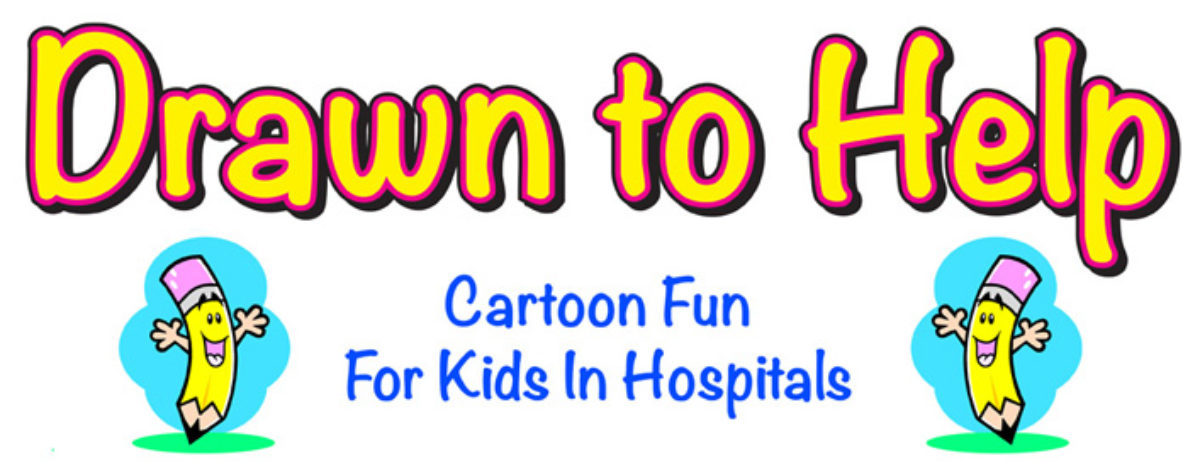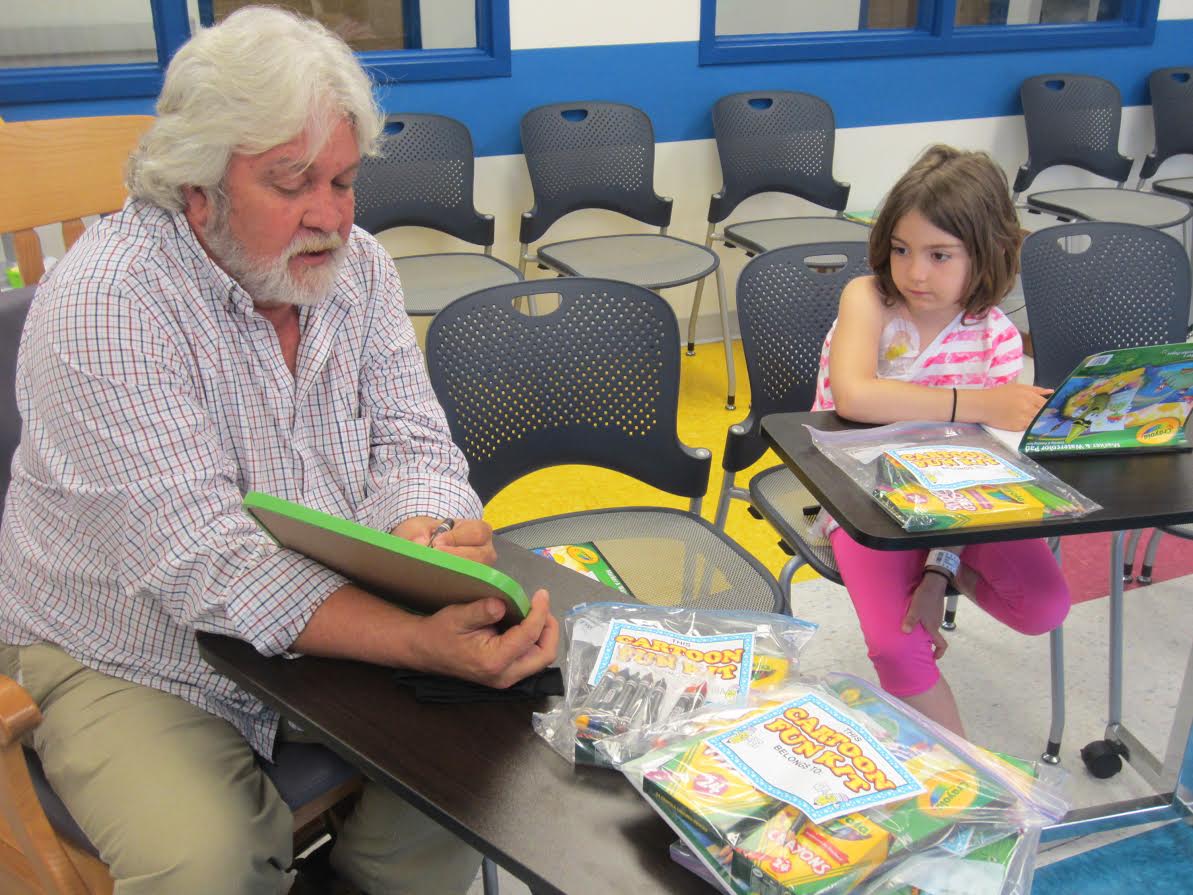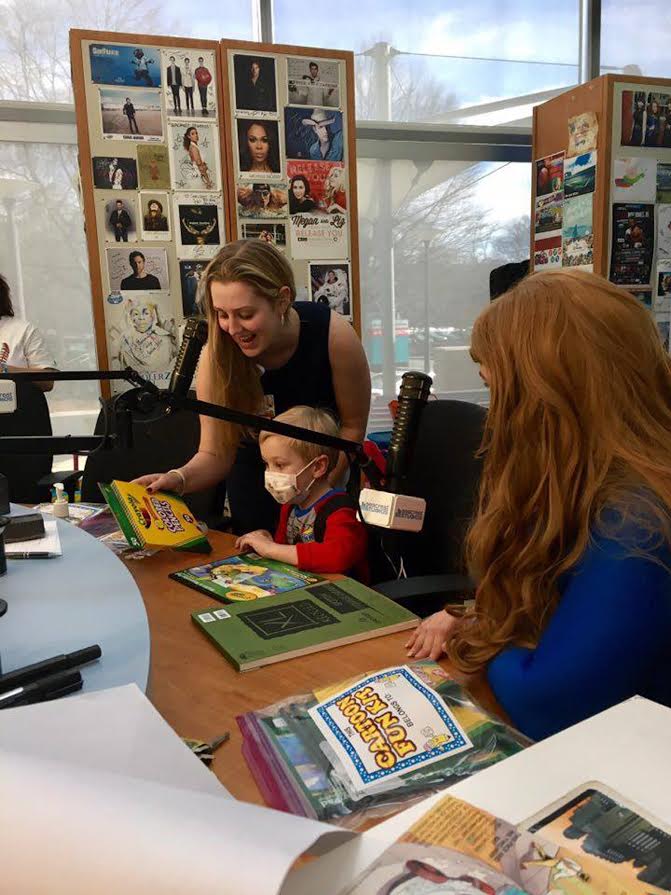By Jack Ahern
Pediatric patients often feel overwhelmed by the strict daily regimens they go through as they battle challenging medical conditions. This can result in these children feeling they have no control over their circumstances and very little joy in their day to day life. Drawn to Help, a national nonprofit based out of Columbus, North Carolina, was created to give these children a feeling of more control and help them find a creative escape from their daily battles, allowing them to laugh and heal along the way.
 A few years ago, cartoonist Steve Barr was devastated when a close friend’s son was diagnosed with Leukemia. Throughout her son’s treatment, the friend saw the impact art programs had on children in treatment facilities. She suggested that Barr develop similar programs, sharing his love of cartooning with children in hospitals. Steve began Drawn to Help after a few visits to local hospitals. Through word-of-mouth, the cartoon drawing classes spread rapidly. Within the first two years, the program reached multiple hospitals and camps for children fighting challenging diseases. The organization’s volunteers now include such comic and comic book artists as: Al Bigley (DC/Marvel), Tom Bancroft (Disney), Guy Gilchrist (“Nancy,” “The Muppets,” and “Teenage Mutant Ninja Turtles) and Greg Cravens (Creator of “The Buckets” comic strip).
A few years ago, cartoonist Steve Barr was devastated when a close friend’s son was diagnosed with Leukemia. Throughout her son’s treatment, the friend saw the impact art programs had on children in treatment facilities. She suggested that Barr develop similar programs, sharing his love of cartooning with children in hospitals. Steve began Drawn to Help after a few visits to local hospitals. Through word-of-mouth, the cartoon drawing classes spread rapidly. Within the first two years, the program reached multiple hospitals and camps for children fighting challenging diseases. The organization’s volunteers now include such comic and comic book artists as: Al Bigley (DC/Marvel), Tom Bancroft (Disney), Guy Gilchrist (“Nancy,” “The Muppets,” and “Teenage Mutant Ninja Turtles) and Greg Cravens (Creator of “The Buckets” comic strip).
The organization’s main goal is to bring as many professional cartoonists as possible to treatment facilities around the country, creating fun and empowering programs for children in hospitals. Volunteers do bedside visits with pediatric patients and provide group sessions with children whose conditions allow them to participate in a more social setting. Drawn to Help tailors lessons to fit the abilities and needs of each child, making it as easy and fun as possible for them. For the youngest children, cartoonists draw whatever they request and let them color in the art. For the older patients, volunteers teach them to draw and develop their own cartoon characters. During the visit from a volunteer cartoonist, each child also receives a free packet of nontoxic and latex-free art supplies that they get to keep.
Aside from providing a fun and pleasant distraction to everything they are going through, the class gives them a sense of normalcy. Drawing funny pictures helps the children heal, as humor can encourage them to look to the future and keep fighting. Research shows that creativity, from activities such as drawing cartoons, reduces stress and even help kill pain. Volunteers regularly report of despondent children who suddenly perk up and begin to laugh and talk about their futures. Kids who hadn’t been eating due to the side effects of their treatments began nibbling on food while they were drawing, because they were having so much fun they forgot they weren’t hungry. They have even seen pediatric patients stop crying during painful treatments and start giggling when they get to draw funny pictures.
Through the organization’s growth into new areas, they discovered natural partnerships. One volunteer, while visiting the children’s hospital in Cincinnati, Ohio discovered that the Ryan Seacrest Foundation had built closed-circuit TV stations in the lobbies of ten children’s hospitals across the country. The foundation and Seacrest Studios were broadcasting kid friendly and fun programming directly into the young patients’ rooms. Drawn to Help began collaborating with the Ryan Seacrest Foundation to air drawing sessions where kids can call in on the phone from their rooms and interact directly with the cartoonists while they draw.
As the organization grew, Drawn to Help began to pursue grants and individual contributions. Barr credits much of their success to collaborative efforts with organizations such as The Pollination Project whom gave financial as well as operational support and advice. The Ella Lyman Cabot Trust also provided funding for art supplies for the children and travel costs for the organization.
Now, Drawn to Help has established a fiscal sponsorship program with Fractured Atlas, an organization with a history of success in helping altruistic art programs grow. Fractured Atlas has provided oversight and guidance for Drawn to Help’s programs. This relationship has also allowed Drawn to Help to pursue larger grants more aggressively. As the organization grows, more professional cartoonists, artists and illustrators are volunteering. Additional fundraising makes is possible to defray travel costs, pay for art supplies and materials and give artists training in patient confidentiality regulations.
Drawn to Help is also expanding online to reach young patients they might not get to see in person. The organization plans to launch a digital collection of art activities available as printable downloads that can be used by patients, their families, Child Life Specialists and other caregivers free of charge. Ultimately, Drawn to Help hopes to continue to reach as many children as they can across the country to inspire them during their treatment, enabling them to have a sense of control over their lives and to have a good laugh.
Steve Barr, Drawn To Help‘s founder, sold his first cartoon to a magazine when he was in the seventh grade. And he’s been drawing funny pictures professionally ever since. Steve has written and illustrated 13 books that teach children how to draw cartoons of their own, created a syndicated comic strip and had his work appear numerous times in publications like the “Complete Idiot’s Guides” and the “Chicken Soup for the Soul” series. Out of all of his accomplishments, the most rewarding and fulfilling thing he has ever done is sharing his passion for cartoons with children in hospitals.
Drawn To Help is a sponsored project of Fractured Atlas, a non-profit arts service organization. Contributions for the charitable purposes of Drawn To Help must be made payable to “Fractured Atlas” only and are tax-deductible to the extent permitted by law.
Jack Ahern is a Masters of Public Administration student focusing on nonprofit management at NC State University.








